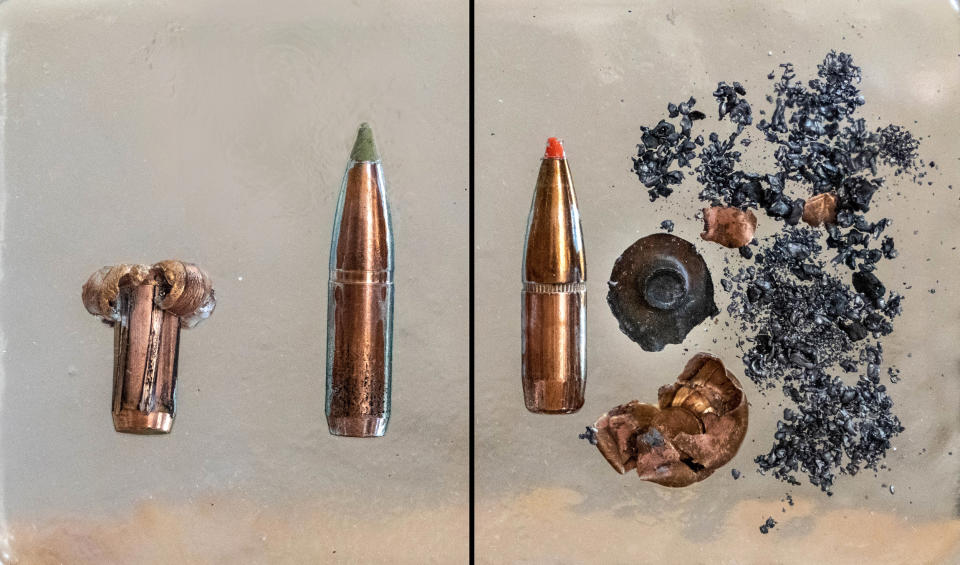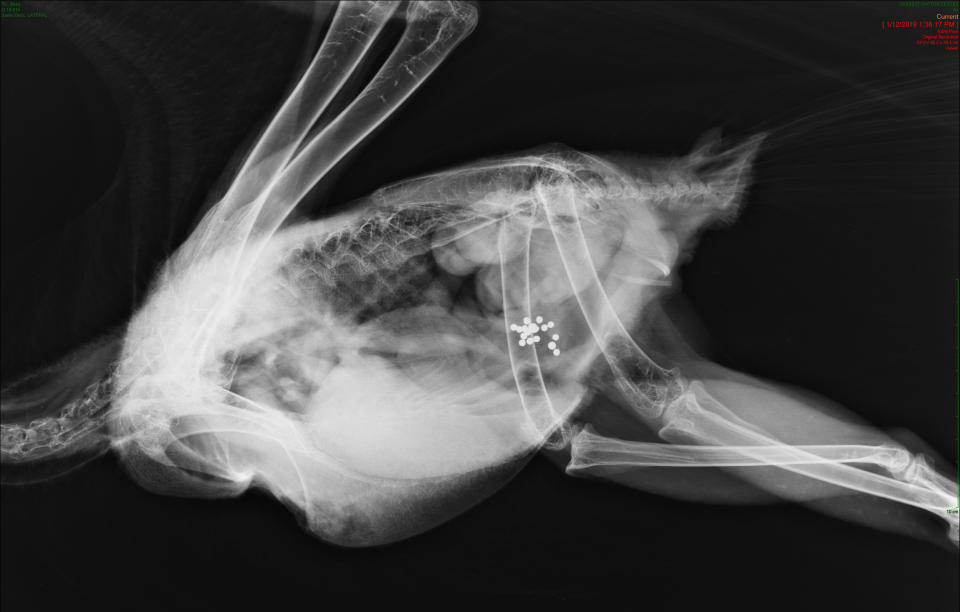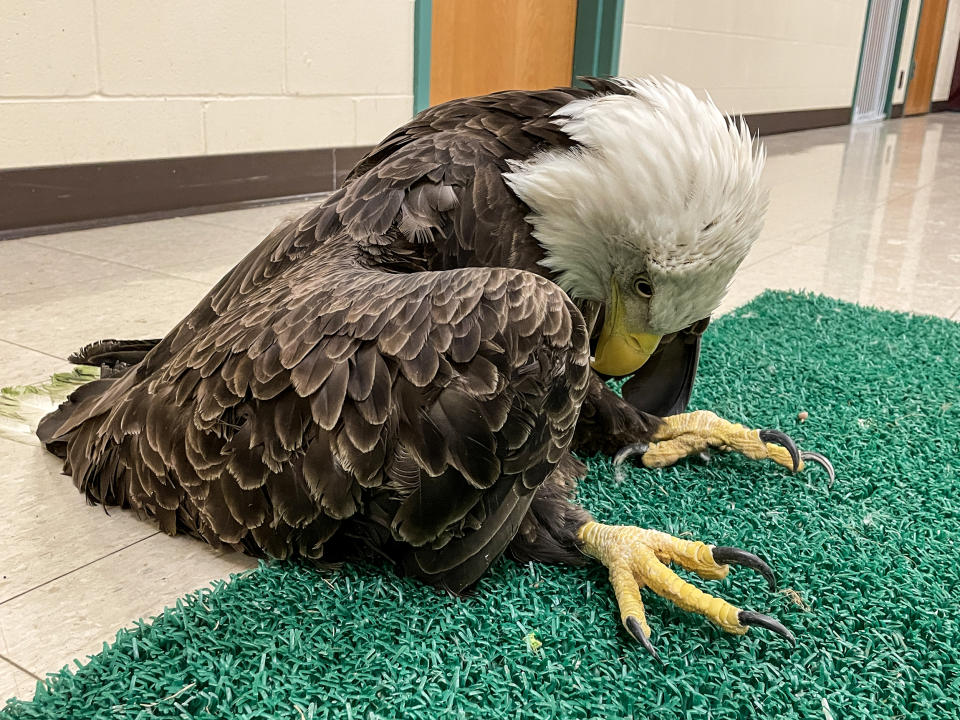Bald eagles show signs of widespread lead poisoning
Bald eagles, the centuries-old symbol of the United States, show signs of widespread poisoning from one of the country’s most pernicious pollutants: lead.
Nationwide, bald and golden eagles are continually exposed to the toxic heavy metal, according to research that tested more than 1,200 eagles from Alaska to Florida.
The study, which was published Thursday in the journal Science, evaluated eagles in 38 states, testing their bones, feathers, livers and blood for lead. Researchers found that 46 percent of bald eagles and 47 percent of golden eagles had chronic lead poisoning.
“When you look at lead levels in bone, these birds are getting exposed repeatedly to lead over their lives,” said Todd Katzner, a supervisory research wildlife biologist with the U.S. Geological Survey and the study’s principal investigator. “It’s happening again and again.”
The effects of lead, which scientists believe eagles consume as they scavenge the remains of animals shot with lead ammunition that fragments within their bodies, can be deadly for all birds, including eagles.

The resurgence of bald eagles has been heralded as one of the great conservation successes in the U.S. But the study suggests lead is stunting the population growth of both eagle species and could hamper progress going forward.
For golden eagles, whose population is not trending upward, the consequences could be more significant.
“There’s just not much of a cushion for golden eagles,” said Viviana Ruiz-Gutiérrez, assistant director at the Center for Avian Population Studies at Cornell University, who was not involved in the research.
Emblazoned on the presidential seal and printed on the dollar bill, the bald eagle is omnipresent in American culture.
By the early 1960s, however, the birds were nearing extinction, with just 417 breeding pairs left across the nation. It was among the first species declared to be endangered.
Through widespread protection, the birds began to recover slowly. The 1972 ban of DDT, an agricultural pesticide that caused bald eagles’ eggshells to thin so badly that they struggled to reproduce, proved key to their rebound.
By 2007, the federal government removed the bald eagle from the list of threatened or endangered species.
“In the past 10 years, bald eagle populations have increased fourfold,” Ruiz-Gutiérrez said.
Last winter, the U.S. Fish and Wildlife Service estimated bald eagle populations had soared to include 71,400 nesting pairs and more than 316,700 individual birds.
U.S. Secretary of the Interior Deb Haaland called the rebound “a historic conservation success story.”
First protected in 1962, golden eagles have not made such a dramatic turnaround.
“Golden eagles are actually declining across most of their range,” Ruiz-Gutiérrez said.
The impact of lead on raptors, including eagles, has not been a secret.
“Science has known for many years that birds of prey, especially scavenging birds of prey, are exposed to lead and sometimes present at a veterinary hospital or rehabilitation facility with substantial lead poisoning,” Katzner said.
Small, regional studies identified what researchers thought were hot spots for lead exposure.
Decades-old research that used X-ray technology of “gut piles,” which are animal remains left after hunting, found fragments of lead spread out in the flesh.
Eagles often feast on carrion, including gut piles and other remains.

“Lead was fragmenting from bullets into the food source,” said Vince Slabe, a research wildlife biologist at Conservation Science Global, a nonprofit research organization, and the lead author of the Science paper.
Still, no researchers had taken a comprehensive look at the issue.
“There has never been an attempt to understand this problem at a continental scale and look at the demographic consequences of that lead exposure,” Katzner said.
Slabe and Katzner organized collaborators across the country, asking them to harvest blood samples from living birds captured and banded for research or other reasons. They asked state and federal partners to send them carcasses of eagles found dead. Also, they collected blood from a few eagles brought to wildlife rehabilitation facilities.
Lead concentrations in blood, feathers and tissues like the liver indicate recent lead exposure. The researchers found in 620 samples of live birds that 28 percent of bald eagles and 9 percent of golden eagles had acute lead poisoning.
The concentrations spiked in the winter, when birds were less likely to find prey and more likely to be scavenging for a meal.
Over time, ingested lead becomes stored in bones. Nearly half of 448 dead birds whose femurs were tested had chronic poisoning, the study said. Older birds had higher concentrations of lead in their bones, which suggests they had multiple, cumulative exposures.
The researchers modeled how the poisoning would affect the population growth of these species, finding that lead would reduce bald eagles’ growth rate by nearly 4 percent each year. Golden eagles would see a reduction of nearly 1 percent.
It might not sound like much, but for golden eagles, which have a population of about 30,000 in the U.S., it could make a sizable difference in the species’ trajectory.
“Little impacts can add up over time,” Katzner said. “In 20 years, that adds up to thousands and thousands of golden eagles removed from the population.”
The modeling is conservative and only considers the lethal impacts of lead. The overall impacts could be more significant.
“If birds live, it can affect almost every system of their body,” Slabe said. “It can cause them to lose their ability to fly, lose their ability to digest food. It can affect their motor skills.”

Lead can be lethal for any bird, even if it’s a problem more likely to draw human attention in birds protected by federal law, such as eagles.
“The more it’s studied, the more we find it,” Ruiz-Gutiérrez said. “We’re really finding it in bald and golden eagles because they are of interest legally, federally.”
Scientists view lead as a major roadblock in the recovery of the California condor, the largest bird in America.
In 1991, the federal government banned lead ammunition in hunting waterfowl. The U.S. Fish and Wildlife Service in 2017 issued an order designed to prevent the use of lead ammunition on its lands. The Trump administration reversed that decision less than two months later. California banned the use of lead ammunition by hunters in 2019.
Some outdoors and hunting groups, such as the Congressional Sportsmen’s Foundation, oppose such bans, arguing that the science is undercooked, the cost of equipment and ammunition prices would rise and the outdoor economy would be harmed.
The Science study could reignite the charged debate over the use of lead ammunition.
“It highlights the link between lead ammunition and the harm it’s causing our most iconic bird species — our most iconic symbol,” Ruiz-Gutiérrez said of the study. “Banning lead ammunition would have an incredible impact on bald and golden eagle populations, as well as other wildlife.”

